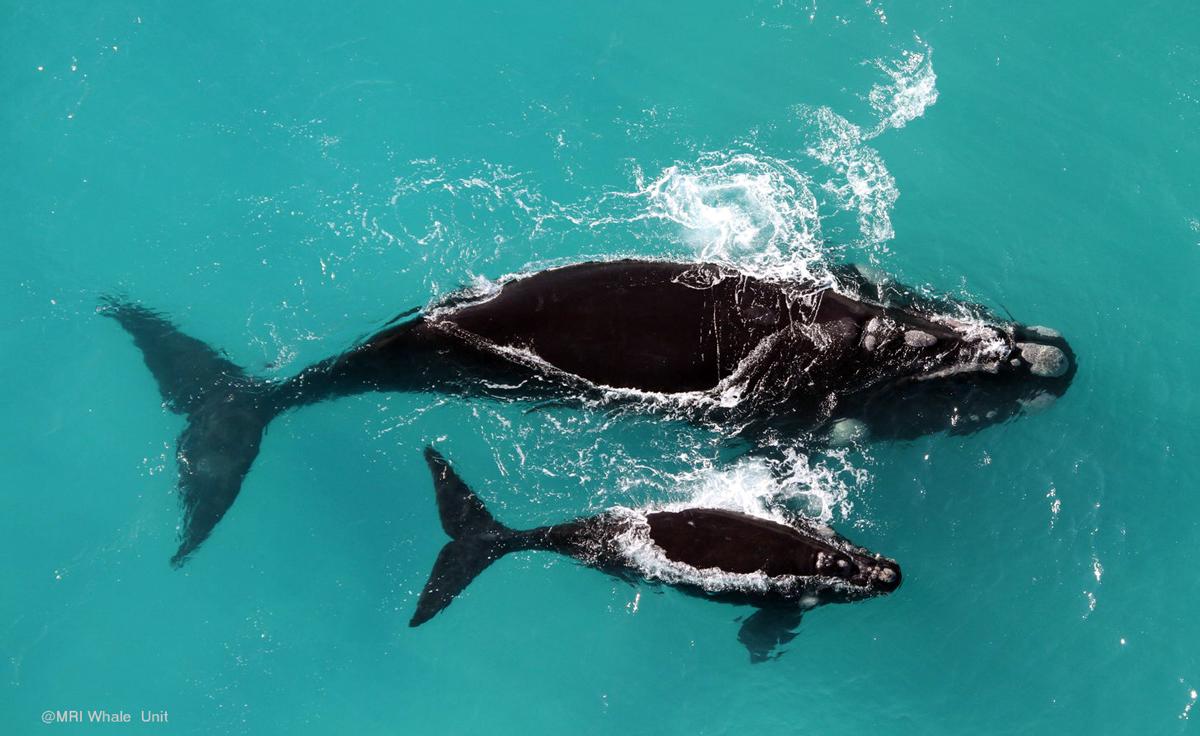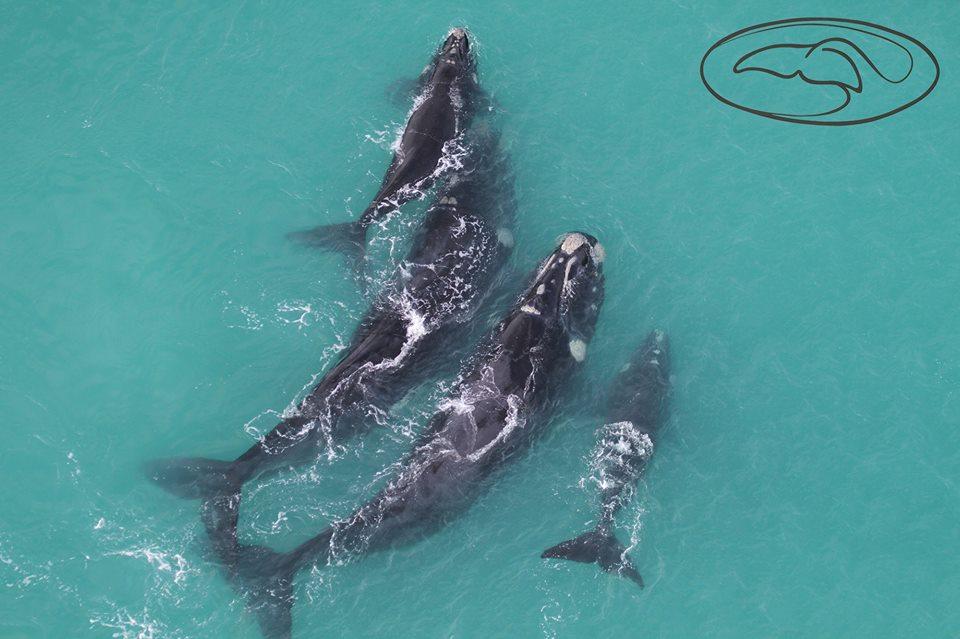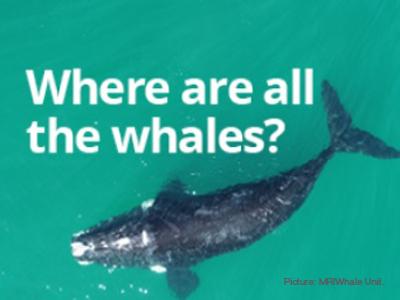Where are all the whales? Too hungry to migrate

A southern right whale and her calf. These whales calve every three years, and data from the Mammal Research Institute Whale Unit at the University of Pretoria shows that this has shifted to every four to five years. Picture: Mammal Research Institute Whale Unit
The large numbers of southern right whales that usually visit the South African coast have been in dramatic decline since 2010. Research conducted by the University of Pretoria (UP) has shown that many lack the energy to do so and that female whales are calving less often.
“We have seen a huge drop in numbers along our coast, which includes females with calves, males, resting females, receptive females – so-called ‘unaccompanied adults’ – and juveniles,”
says Dr Els Vermeulen, research manager of UP’s Mammal Research Institute Whale Unit.
Whales are capital breeders, meaning they feed for one half of the year and fast during the other half. The success of reproduction depends on the success of feeding. Also, migration is energetically costly.
“We think there might be something wrong with their feeding,” says Dr Vermeulen, “and that they may not have the energy to migrate, or to maintain their pregnancies.” Southern right whales calve every three years, but according to the data, this has shifted to every four to five years.
Data from the 1990s compared to 2015 to 2019 also shows a drastic shift northward in foraging behaviour.
“It looks like the whales are trying to compensate for a change. If the foraging was successful, they would not have changed their behaviour.”
Southern right whales forage in a vast region in the southern Indian and Atlantic Oceans, mainly on krill and sometimes on copepods, the latter being lower in protein content. Dr Vermeulen says there could be a large ecosystem change in sub-Antarctic waters. These whales usually arrive in South African waters between July and the beginning of December.
While the whales are trying to adapt, it seems they are not being successful, because pregnancy rates have dropped. “The adaptation is not sufficient at this point,” Dr Vermeulen says. There was a peak in calves in 2018, but she says, those were the females who should have given birth in 2016 and 2017. “This year there were very few whales to be seen.”
Pregnant females are motivated to migrate to the South African coast to give birth because the waters are shallow and there are not many predators. But they need to expend energy to travel. The rest of the whales will not migrate if they don’t have the energy, which is what is happening. “We are seeing only 20 to 30 unaccompanied adults when we should be seeing 300 to 400. We don’t know where they are if they are not migrating to South Africa.” Next year satellite trackers will be attached to some of the whales to monitor where they are in fact going.

Drone images taken of whales help experts to identify individuals and calculate body volume estimates. Blubber thickness is an indication of the animal’s energy reserves. Compared to aerial photographs taken in 1988 and 1989, recent data shows that whales in the late 1980s had nearly three times more blubber than those of today. “Any mammal that is too skinny will not ovulate, fall pregnant or maintain its pregnancy,” says Dr Vermeulen.
There are more than 6 000 whales in the South African population. Only females are identified. Pictures are taken of the “white spots” on their heads, which are actually callouses populated by whale lice. These patterns are individual to each whale; software identifies the specific whale.
“Southern right whales are slow to reproduce, and the population is back to only 30% of the pre-whaling days of 1935,” explains Dr Vermeulen. “The environment is changing at such a rate that whales might be struggling to cope with it. If it is an issue of dolphins being caught in fishing nets, even though it is difficult to change, you can talk to fishermen. But what do you do if it is climate change? It is worrying, and is it going to get worse for them?”
Super-feeding humpback whales
Humpback whales migrate closer to the Antarctic than southern right whales. Since 2012, experts have noticed what is called super-feeding groups off South Africa’s West Coast.

Humpback whales migrate further south, closer to the Antarctic than southern right whales. Since 2011, experts have noticed what is called super-feeding groups off the west coast of South Africa. “It is basically a snack on their way during the migration south,” says Dr Vermeulen.”
They are seen during October, November and sometimes early December. Humpback whales calve around the coast of central West Africa and on the eastern coast of southern Africa, past Mozambique.
Super-feeding could be related to an upwelling of krill in the Benguela current. It is the largest feeding aggregation of whales outside the Antarctic; however, it is not the normal feeding area of humpback whales.
Experts have never seen calves during these super-group feedings. The formation of the groups are unique: more than 200 to 300 very tightly packed whales feeding. Just like southern right whales, they feed on krill, but at different depths and they use other strategies to feed, which is why one does not see the two species together.
Source
This article was written by Dr Els Vermeulen and was curated from the University of Pretoria- Research.
The original article appears here.
Call us and schedule your listing today! Contact Us
Copyright © 2025 Hermanus Online Magazine. Web Development by Jaydee media.

